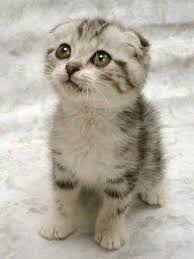This pet peeve of mine is when Darwinists use obvious examples of micro evolution or even simple change as evidence for macro evolution, when a species evolves into a wholly new species. This tactic has been employed by Darwinists ever since Darwin used the micro evolution of changing finch beak size to explain the alleged macro evolution of the species. This is not a new idea, but it is used often. While on my recent trip to Berkeley with Stand to Reason I encountered a student who defined becoming a new species as "when one group can no longer breed with another group." Unfortunately, there are all sorts of reasons groups may no longer be able to interbreed. This does not mean a fruit fly is no longer a fruit fly.
.jpg)
Anyway, O'Leary has written about this far better than I ever could. He explains the criteria one scientist uses as evidence for macro evolution also occur in the changes in a kitten becoming a grown cat. But a Kitten is a young cat! This is no species change. It is common change within a species. If a kitten can undergo these same changes as a simple bacteria, but still remain a feline, why would we assume the bacteria is now a new species? Clearly this criteria is not adequate to explain a change from species to species.
What bothers me the most about this is the dishonesty regarding this issue. Macro-evolutionists either know this type of argument does not constitute species change, and thus willfully attempt to deceive the public, or they do not know about this problem, and thus are not doing their due diligence because they are deceived themselves. Either way this is more an example of verbal sleight of hand than any true evidence.
If you would like a little more in depth analysis of this issue, check out this podcast, or read The Politically Incorrect Guide to Darwinism and Intelligent Design, chapters 3 and 4. There are many more resources on this, but these are a good start.


No comments:
Post a Comment